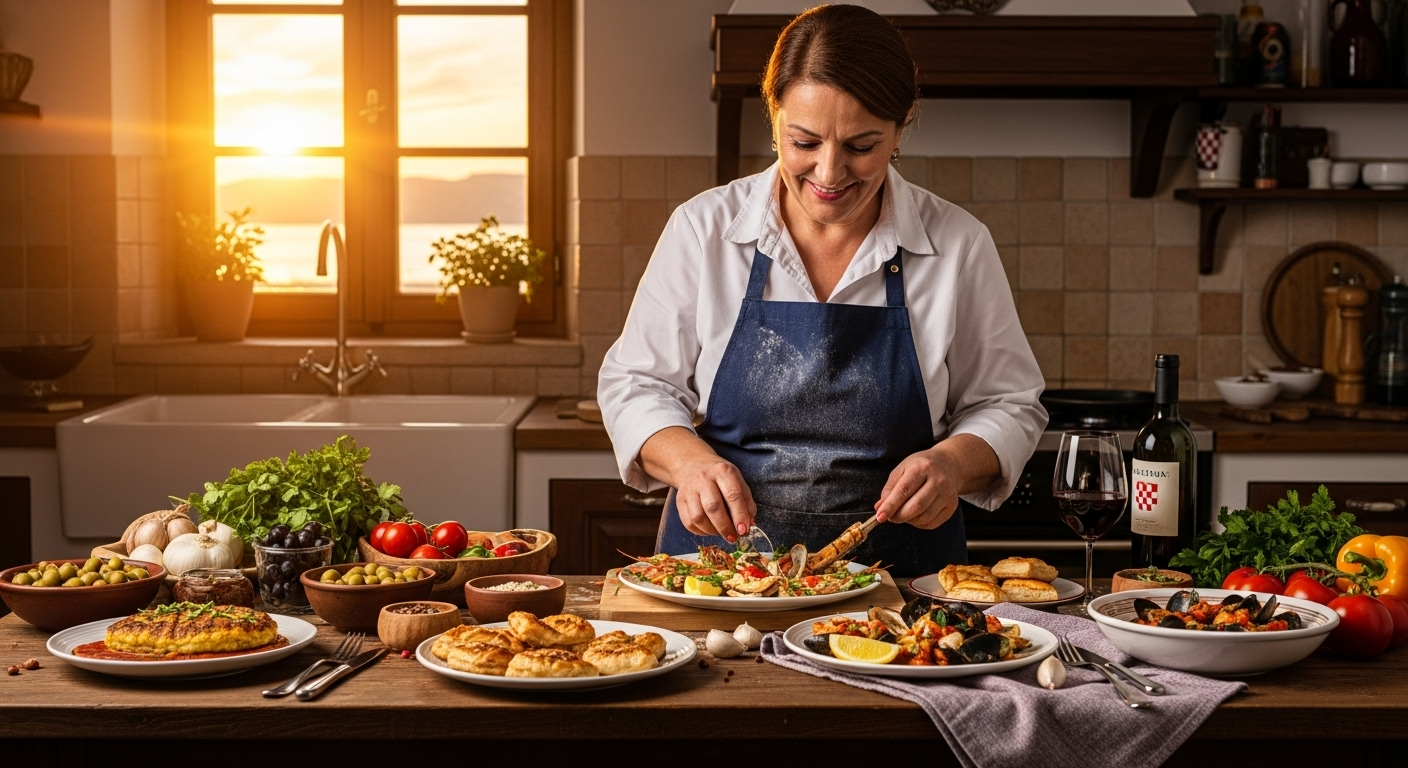Umami Unleashed: The Art of Flavor Layering
Dive into the world of culinary alchemy as we explore the intricate art of flavor layering. This innovative technique transforms ordinary dishes into extraordinary culinary experiences, tantalizing taste buds and elevating home cooking to new heights. Join us on a journey through the science and creativity behind building complex, multi-dimensional flavors that will revolutionize your approach to cooking.

Building a Flavor Profile
Creating a well-balanced flavor profile is akin to composing a symphony, with each ingredient playing a crucial role in the overall harmony of the dish. Start by identifying the base notes - these are the foundational flavors that will anchor your dish. For example, in a savory stew, this might be the rich umami of beef stock or the earthy sweetness of caramelized onions. Next, introduce middle notes that add complexity and depth. Herbs, spices, and aromatic vegetables often serve this purpose, providing layers of flavor that complement and enhance the base. Finally, top notes are added to brighten and lift the dish. These could be acidic elements like a splash of vinegar or citrus zest, or fresh herbs added at the end of cooking. The key is to create a balance where no single flavor overwhelms the others, but rather each contributes to a cohesive and multi-dimensional taste experience.
Techniques for Flavor Enhancement
Mastering various cooking techniques is essential for effective flavor layering. One powerful method is the Maillard reaction, a chemical process that occurs when proteins and sugars are heated together, creating complex flavors and appealing brown colors. This can be achieved through searing meats, roasting vegetables, or toasting spices. Another technique is infusion, where flavors are extracted into a liquid medium. This could involve steeping herbs in oil or creating aromatic broths. Reduction is also a valuable tool, concentrating flavors by slowly evaporating liquid components. Additionally, the strategic use of salt throughout the cooking process can significantly enhance overall flavor perception, not just by adding saltiness but by amplifying other tastes present in the dish.
The Role of Texture in Flavor Perception
While often overlooked, texture plays a crucial role in our perception of flavor. The way food feels in our mouth can significantly impact how we experience its taste. Incorporating a variety of textures can add depth and interest to a dish, making the eating experience more engaging and satisfying. Consider contrasting smooth and creamy elements with crunchy or crispy components. For instance, a velvety soup can be elevated with the addition of crisp croutons or a sprinkle of toasted nuts. Similarly, the interplay between hot and cold temperatures can create exciting flavor contrasts. Experiment with combining warm dishes with chilled elements or vice versa to create unexpected and delightful taste sensations.
Balancing and Harmonizing Flavors
The art of flavor layering is not just about adding more tastes, but about creating harmony and balance among different flavor components. This requires a keen understanding of how different tastes interact and complement each other. For example, a touch of sweetness can help balance out acidity or bitterness, while a hint of salt can enhance sweetness in desserts. Umami, often described as a savory or meaty taste, can add depth and richness to vegetarian dishes. The goal is to create a flavor profile where each element enhances the others, resulting in a dish that is greater than the sum of its parts. This might involve adjusting seasonings throughout the cooking process, tasting and refining as you go. Remember, the key to successful flavor layering is subtlety - each layer should contribute to the overall experience without overpowering the other elements.
Flavor Layering Tips & Tricks
• Start with high-quality, fresh ingredients as your base
• Use aromatic ingredients like onions, garlic, and ginger as flavor foundations
• Experiment with different cooking methods for the same ingredient
• Incorporate umami-rich ingredients like mushrooms, tomatoes, or aged cheeses
• Layer flavors gradually, adding ingredients at different stages of cooking
• Use acids (citrus, vinegar) to brighten and balance rich flavors
• Don’t forget about garnishes - they can add a final layer of flavor and texture
• Explore global spice blends for complex, pre-balanced flavor combinations
• Consider the order of tasting - place contrasting flavors next to each other on the plate
• Allow dishes time to rest, enabling flavors to meld and develop
In conclusion, mastering the art of flavor layering opens up a world of culinary possibilities. By understanding the science behind taste perception, employing various cooking techniques, and carefully balancing flavors and textures, you can transform even the simplest ingredients into extraordinary dishes. Remember, flavor layering is as much about creativity as it is about technique. Don’t be afraid to experiment, trust your palate, and have fun exploring the endless combinations of flavors that await you in your kitchen. With practice and patience, you’ll soon be creating dishes that not only satisfy hunger but also provide a truly memorable gustatory experience.





